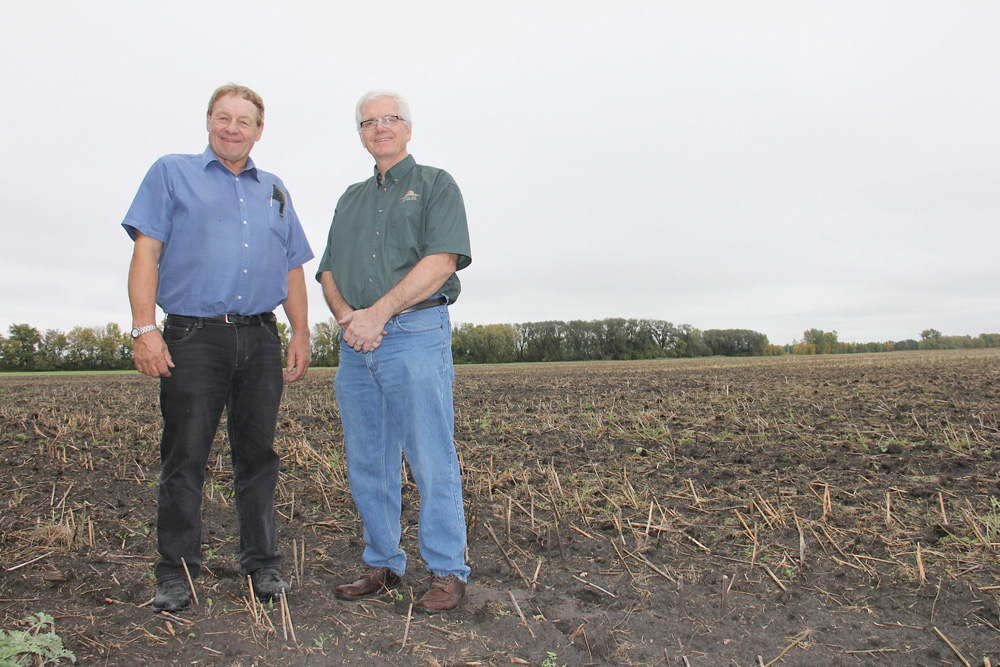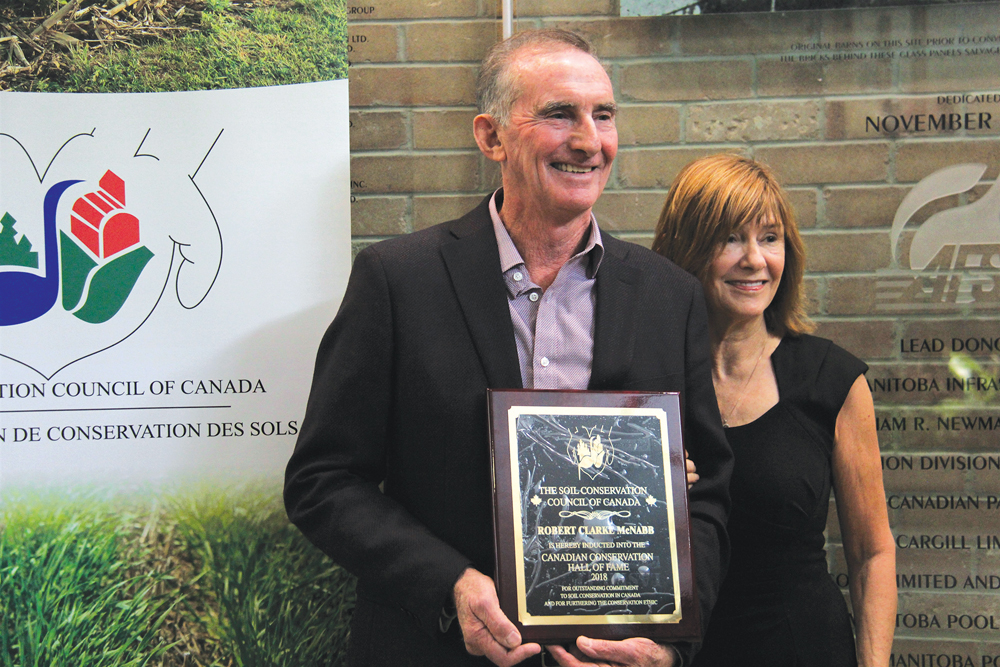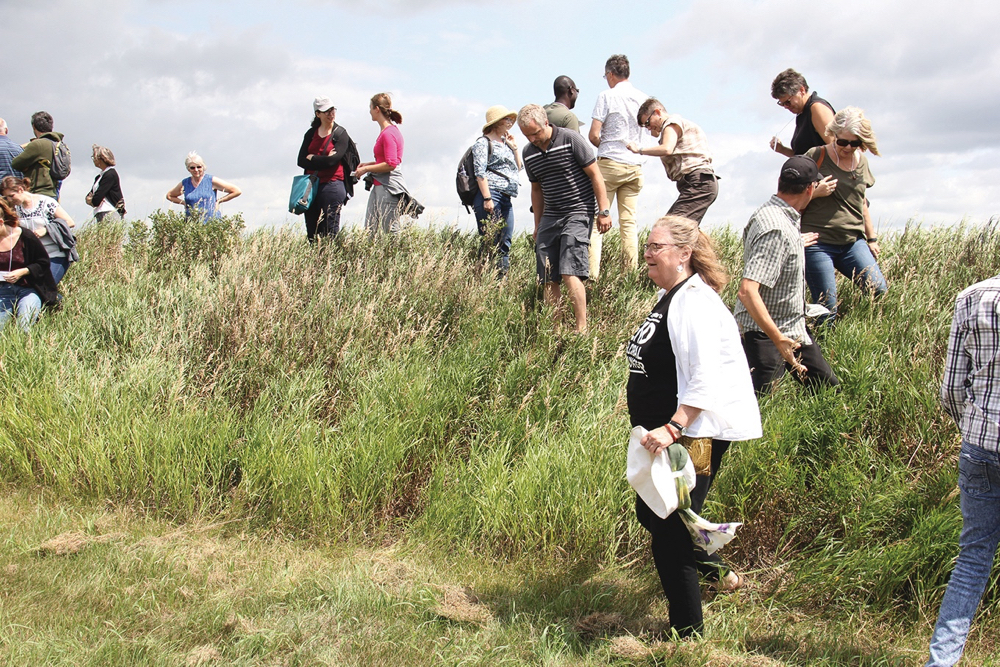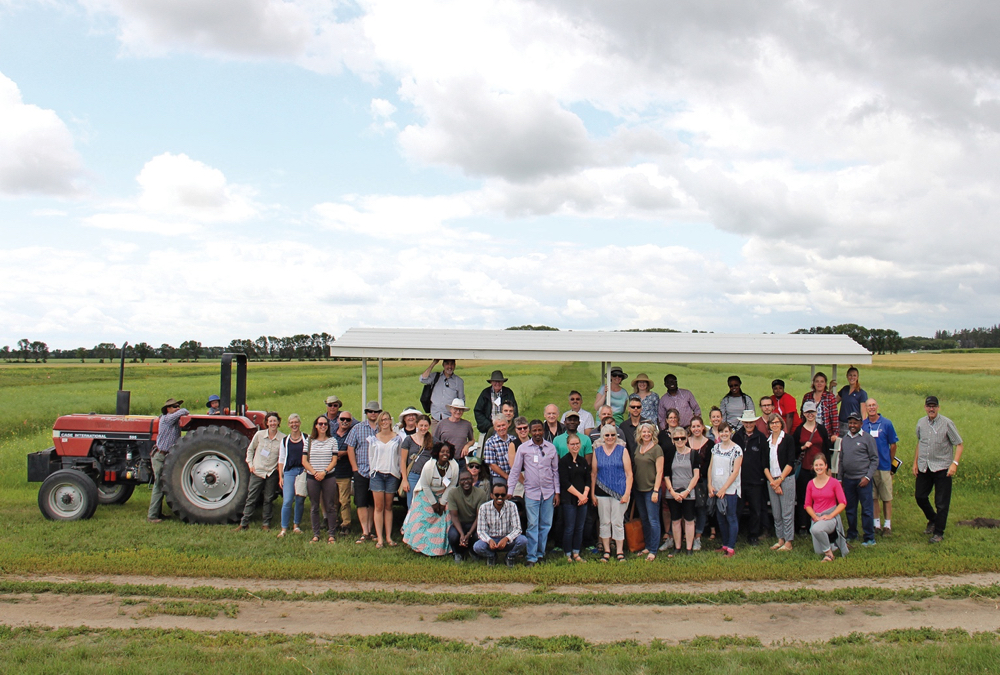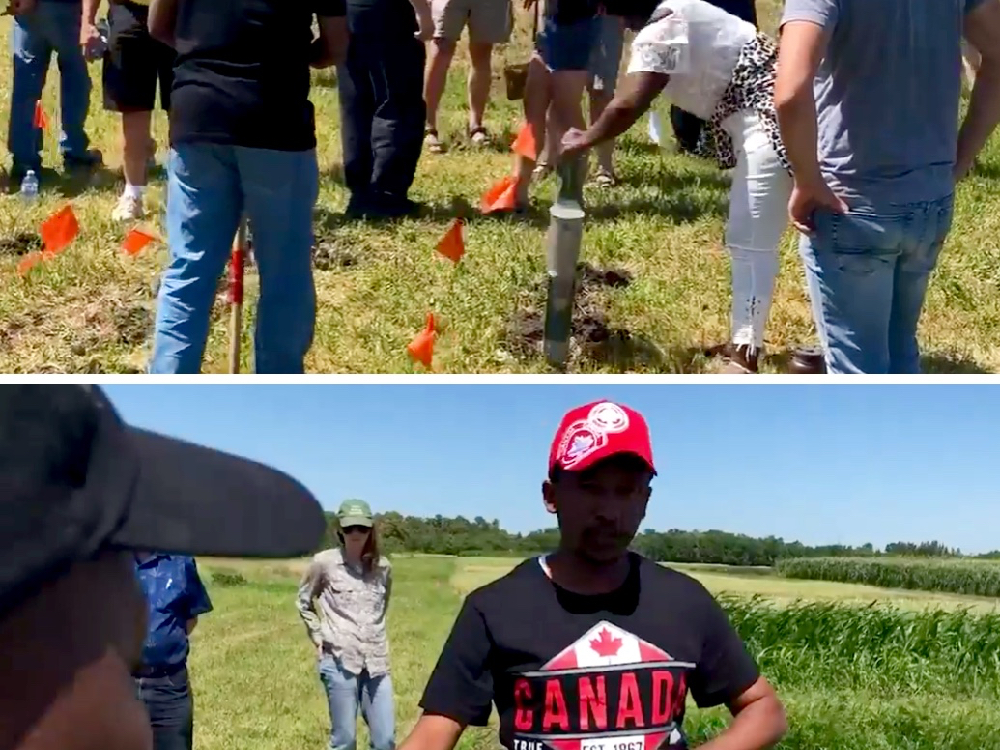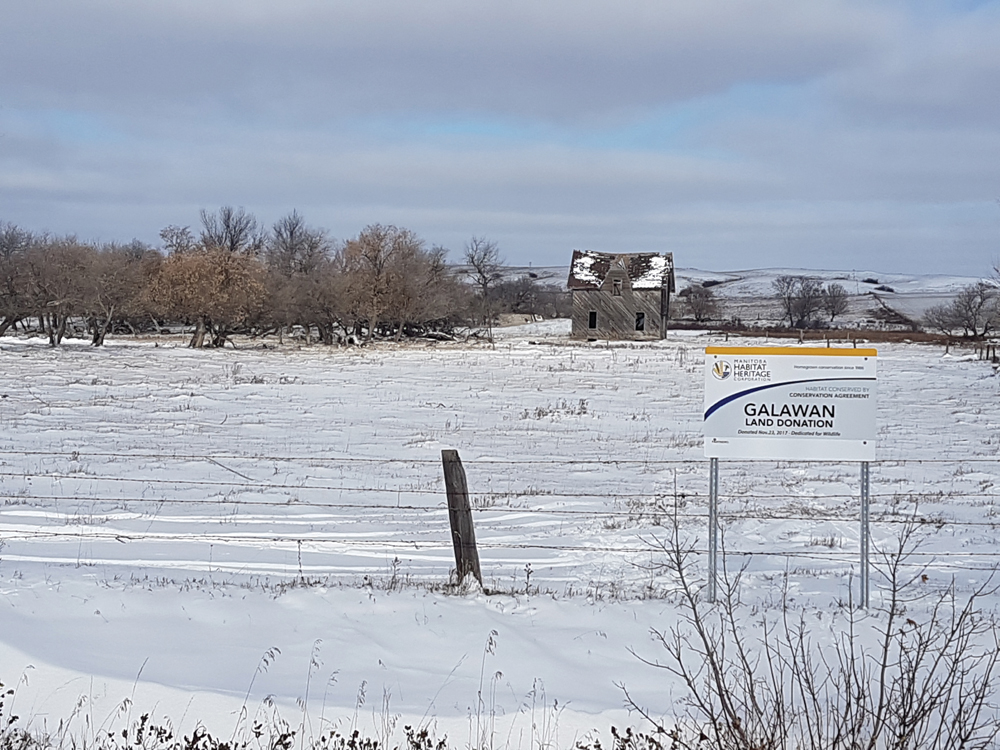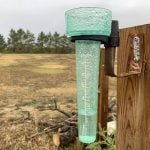When the soil began to blow south of Winkler this spring, Richard Warkentin knew his phone would ring.
It did, almost on cue, as he drove the back roads eyeing dust storms swirling on a mid-April afternoon.
“It was a guy wanting to plant trees,” says the long-serving technician and project manager with the Stanley Soil Management Association (SSMA).
“They start to think about it when the soil is blowing.”
It’s something many farmers around these parts have been thinking about since the early 1980s, thanks to the work of the non-profit, producer-driven SSMA.
Read Also
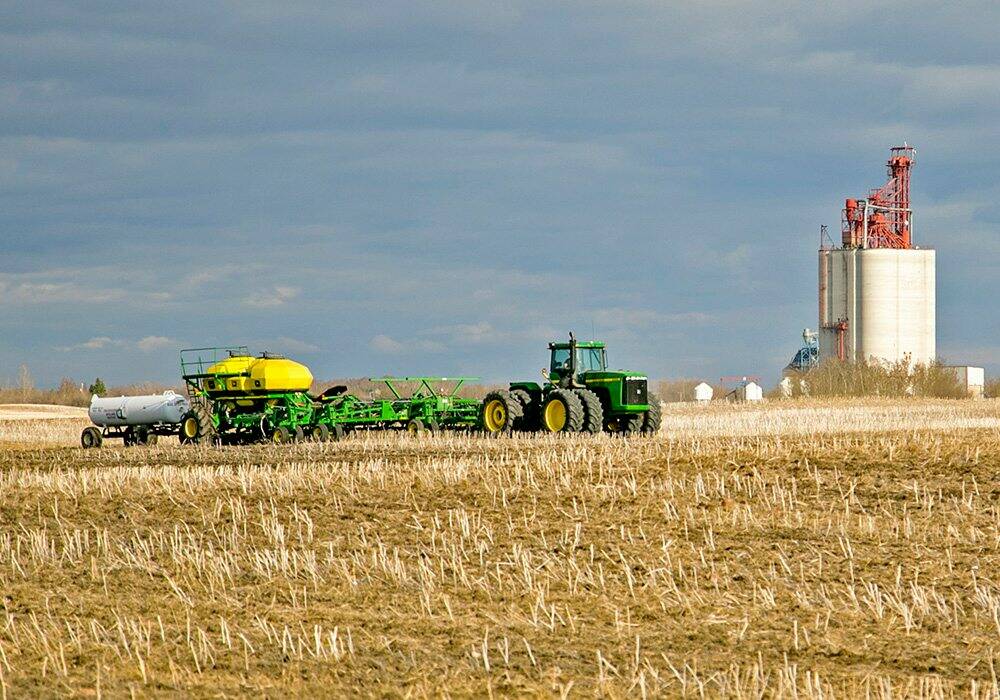
Better data on fertilizer emissions with the Internet of Things
Web of soil sensors looks for live insights on farm greenhouse gas emissions and nitrogen fertilizer application.
It organized in 1984 during another period when the sandy soils of the region were flying, and farmers wanted relief from wind and dust storms.
The group initially organized as an economic development program, managed under the umbrella of the Stanley Agricultural Society.
The Prairie Farm Rehabilitation Administration (PFRA) supplied a tree planter to the organization, and by 1989, they had planted almost 175 miles of field shelterbelts, using a Ford 5610 purchased with Farmer for Tomorrow program funding, and still in use today, along with a Farm King Tiller and Weed Badger.
It’s been used to maintain and plant more than 500 miles of trees since they got started, says Warkentin, who was a local weed supervisor until he joined the SSMA.
It’s a post-PFRA era now of course. But they keep on planting trees. They now buy trees from other nurseries to supply to farmers, said Warkentin, estimating last year’s purchases amounted to around 14,000 trees. The SSMA was directly involved in planting about 50 per cent of them.
The focus now is very much on convincing farmers to keep their trees in, through support for stand maintenance, including tillage, hoeing or spraying.
They’ve also added biological weed monitoring and control and well sealing to their list of activities.
The SSMA releases beetles to battle leafy spurge every year, and now, with over seven years of data collected at sites, has seen more than 80 per cent decrease of spurge in areas monitored. They’re also aggressively searching for, and destroying the invasive weed diffuse knapweed that takes over pastures if left unchecked. Sealing off wells for landowners is another major part of SSMA activities.
At one time there were about 40 other similar groups, said Warkentin, who operates the association from a small office on his property south of Winkler. Others disbanded as the emphasis on tree planting waned, he said.
“I would say we’re the only one left now, he said.
But they’ve more than proved their worth helping the municipality, which joined the Pembina Valley Conservation District in 2003, support soil and water conservation projects that benefit local landowners. “They wanted us to stick around,” says Warkentin. “They consider us a partner.”
More recently, the SSMA facilitated a large 2013 study identifying a broader range of lesser-recognized benefits for retaining shelterbelts, including improved soil fertility and pollinator habitat to enhancing the rural community’s sense of place. Its author also made recommendations for strategic management of shelterbelts, including the development of a land-planning guide for farmers for future optimal placement. The SSMA continues to follow up on its recommendations.
It’s all having impact in an era where trees can be seen as little more than weeds that need to get pushed out of the way.
Today even some of the largest farmers in the region are proponents of tree planting, said Warkentin. Some call asking to replace trees they’ve initially taken out.
Those tree lines will be their legacy and most lasting achievement, adds Theo Allan, a Thornhill-based farmer who serves as chair of the board.
There’s been losses of trees certainly too. In fact, there’s probably been more come out than gone in over time, he adds.
“But there are trees being replaced too, and now they’re in the right places,” said Allan. “We have had speakers in to explain the benefits of shelterbelts. Richard has done an awful lot of work to create awareness.”
The Stanley Soil Management Association was recognized in 2014 by the Manitoba Conservation District Association for its extensive efforts in soil and water stewardship education and programming. This is the first of a series highlighting contributions made by individuals and organizations recognized by the MCDA.


